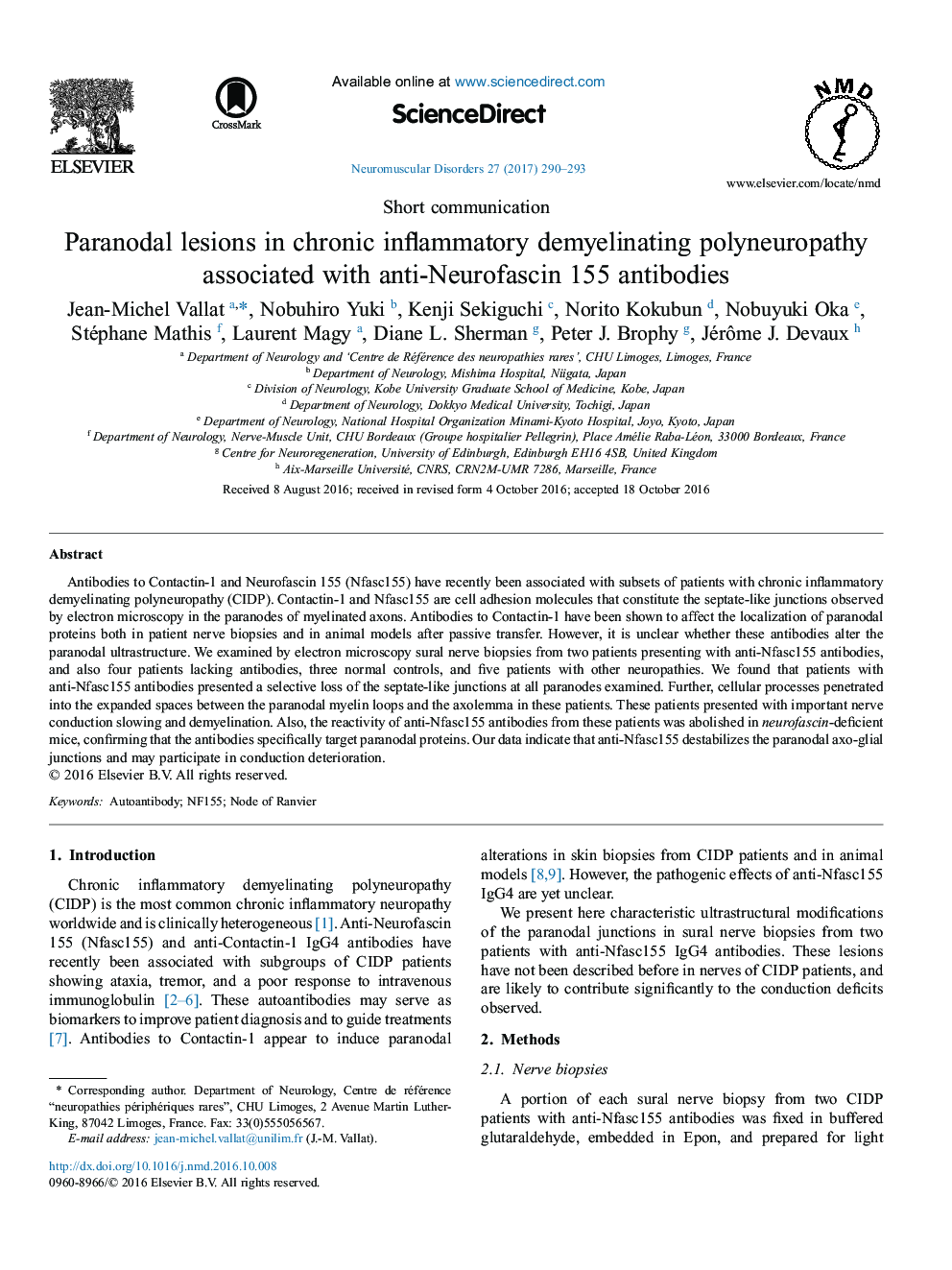| کد مقاله | کد نشریه | سال انتشار | مقاله انگلیسی | نسخه تمام متن |
|---|---|---|---|---|
| 5632074 | 1406526 | 2017 | 4 صفحه PDF | دانلود رایگان |

- Anti-Neurofascin 155 and anti-Contactin-1 IgG4 antibodies have recently been associated with subgroups of CIDP.
- These patients presented ataxia, tremor, and a poor response to intravenous immunoglobulin.
- Antibodies to Contactin-1 appear to induce paranodal alterations in skin biopsies from CIDP patients and in animal models.
- Characteristic ultrastructural lesions are observed on sural nerves of these patients.
- Multiple mechanisms can be responsible for the physiopathology of CIDP, including IgG4-mediated demyelination.
Antibodies to Contactin-1 and Neurofascin 155 (Nfasc155) have recently been associated with subsets of patients with chronic inflammatory demyelinating polyneuropathy (CIDP). Contactin-1 and Nfasc155 are cell adhesion molecules that constitute the septate-like junctions observed by electron microscopy in the paranodes of myelinated axons. Antibodies to Contactin-1 have been shown to affect the localization of paranodal proteins both in patient nerve biopsies and in animal models after passive transfer. However, it is unclear whether these antibodies alter the paranodal ultrastructure. We examined by electron microscopy sural nerve biopsies from two patients presenting with anti-Nfasc155 antibodies, and also four patients lacking antibodies, three normal controls, and five patients with other neuropathies. We found that patients with anti-Nfasc155 antibodies presented a selective loss of the septate-like junctions at all paranodes examined. Further, cellular processes penetrated into the expanded spaces between the paranodal myelin loops and the axolemma in these patients. These patients presented with important nerve conduction slowing and demyelination. Also, the reactivity of anti-Nfasc155 antibodies from these patients was abolished in neurofascin-deficient mice, confirming that the antibodies specifically target paranodal proteins. Our data indicate that anti-Nfasc155 destabilizes the paranodal axo-glial junctions and may participate in conduction deterioration.
Journal: Neuromuscular Disorders - Volume 27, Issue 3, March 2017, Pages 290-293